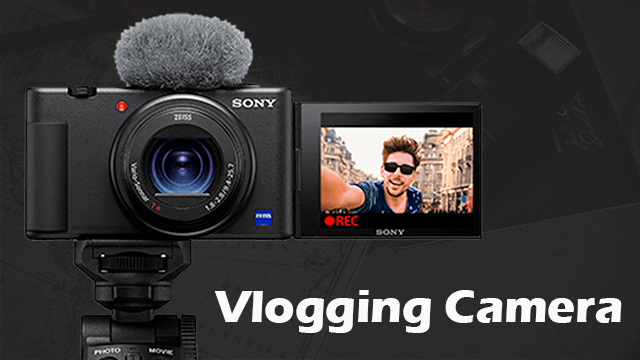Vlogging has evolved into a thriving form of online expression, enabling individuals to share their passions, experiences, and expertise with a global audience. However, choosing the right camera for vlogging can be a critical decision that significantly impacts the quality and success of your content.

- This guide will walk you through the essential steps to pick the perfect camera for your vlogging journey.
1. Determine Your Vlogging Style: Before diving into the world of vlogging cameras, consider your specific vlogging style and needs. Are you a travel vlogger, beauty guru, or tech reviewer? Different niches may require different camera features. Understanding your content goals is the first step in making the right choice.
2. Set Your Budget: Vlogging cameras come in a wide range of prices, from budget-friendly options to professional-grade equipment. It’s crucial to establish a realistic budget that aligns with your financial resources. Remember that your budget should also cover accessories like microphones, tripods, and memory cards.
3. Choose the Right Camera Type: Vlogging cameras typically fall into three categories: DSLR, mirrorless, and compact cameras. Each type has its advantages. DSLRs offer excellent image quality and versatility, while mirrorless cameras are known for their compactness and advanced video capabilities. Compact cameras are highly portable and suitable for casual vlogging. Select the type that suits your content style and budget.
4. Assess Video Quality: Video quality is paramount for vlogging. Look for cameras that can shoot at least Full HD (1080p) video at a minimum, but if possible, opt for 4K resolution to future-proof your content. Consider factors like frame rates (30fps, 60fps, etc.) and bitrates for smoother, more cinematic footage.
5. Evaluate Autofocus and Stabilization: Smooth and sharp video is essential. Cameras with advanced autofocus systems, such as Dual Pixel Autofocus (Canon) or Fast Hybrid Autofocus (Sony), can keep you in focus even while moving. Additionally, in-body or lens-based stabilization helps reduce shaky footage when vlogging on the go.
6. Flip-out Screen: A flip-out or articulating screen is a game-changer for vloggers. It allows you to monitor yourself while recording, ensuring that you’re always in the frame and in focus.
7. Low-Light Performance: Consider the camera’s low-light capabilities, especially if you vlog indoors or in dimly lit environments. Cameras with larger sensors tend to perform better in low light, but also look for models with good ISO range and low noise levels at higher ISO settings.
8. Audio Input Options: Check if the camera has a built-in microphone or the ability to connect an external microphone for improved sound quality. Clean and clear audio enhances viewer engagement.
9. Portability and Size: Vlogging often involves being on the move. Choose a camera that’s comfortable to carry and handle. Smaller and lightweight options are ideal for travel vloggers, while more substantial cameras might be preferred for studio settings.
10. Read Reviews and Seek Recommendations: Before making your final decision, read online reviews, watch YouTube comparisons, and seek recommendations from fellow vloggers. Real-world experiences and insights can provide valuable guidance.
By following these steps and considering your unique vlogging requirements, you’ll be well-prepared to select the perfect camera for your vlogging adventures. Remember that your camera is a creative tool, and the right choice can make your vlogs more engaging and enjoyable for your audience.
Sony Digital ZV 1 Vlog Camera
Amazon.com : 648$
Sony Alpha ZV-E10L Camera
Amazon.com : 798$
